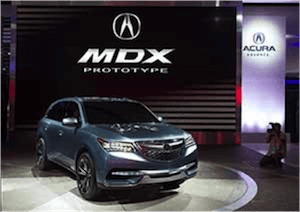I’ve been driving my new 2016 Acura MDX – the most “connected” car I’ve owned yet – for well over a month now.
And my family and I still love it – this beauty drives like a dream.
This car is loaded with proto-self-driving technologies – known as advanced driver assistance systems (ADAS) – like lane-keeping assistance and adaptive cruise control. And that’s not even getting into its voice-guided navigation and souped-up dashboard infotainment system.

The 2016 Acura MDX is loaded with “connected” car features, such as ADAS and tech-driven infotainment and dashboard systems.
That’s not to say the car is perfect – and reader Alex S. wrote in to let me know all about it. Alex says he owns a year-older MDX that has one annoying tech “feature”…
“The voice recognition is abysmal, the worst I have ever used,” he writes. “My cellphone has far superior recognition and GPS map guidance.”
He makes a great point – the car’s operating system still needs a great deal of work to reach “perfection” – and it’s one that cuts to the heart of a huge disconnect for advanced auto tech.
Automakers are still largely reinventing the wheel when it comes to adding today’s most advanced technologies to new vehicles.
Those carmakers sold a record 17.5 million vehicles last year. But their success could be in jeopardy if they drop the ball on the operating system they adopt.
Luckily, two iconic tech stocks are riding to their rescue…
A $31 Billion Opportunity
Like Alex and I have pointed out, the overall operating system on my MDX – and I bet a lot of other new connected cars – needs an upgrade… and fast.
That’s mostly noticeable when using voice-control navigation.
Push one button on the steering wheel and you reach the Acura “voicebot.” But she needs several prompts to get an address loaded or to find a specific location.
By contrast, if I hold the voice-activation button a second longer, I automatically connect to Siri, the artificial intelligence-driven voicebot in my iPhone 6s.









Leave A Comment